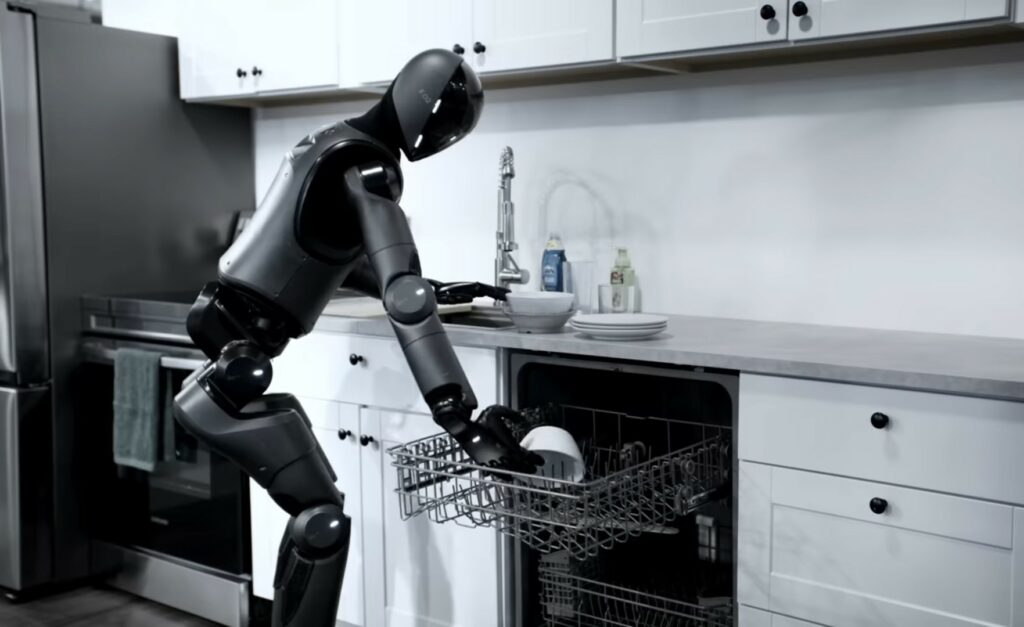
California-based company Figure has unveiled another milestone for its humanoid Figure 02: the robot loaded a dishwasher with high precision using the versatile Helix model, based on the Vision-Language-Action (VLA) architecture. A seemingly trivial task for humans turns into a complex test of precision, grip strength, and adaptation to different types of objects for the artificial assistant.
What’s unique is that no new logic or special algorithms were created to perform this task. This success is based on the same universal Helix system, which has already demonstrated its capabilities in other scenarios. Thanks to additional data and learning from examples of human behavior, Figure 02 has independently mastered the complexities of working with plates, glasses, and other tableware.
The main challenges for the robot are precisely grasping objects with its fingers, rotating them to the right angle, positioning them in the tight space of the basket with an error of a few centimeters, and holding the objects with enough force to prevent them from slipping, but also from breaking. Helix has enabled Figure 02 to demonstrate precision equal to human finger movements, as well as adapt to different sets of dishes and correct actions in the event of an error or collision.
Just a few years ago, robots required special programming to perform such tasks, and washing dishes was considered one of the “impossible” household chores.
Now Figure demonstrates that a universal model and new data are sufficient to make the system work without the need for any specialized design. The same principle previously allowed Figure 02 to fold towels and distribute packages on a conveyor belt.
Helix was introduced in February of this year and has since become the brain of the company’s humanoids. Over the summer, the robot impressed audiences with a video of itself loading clothes into a washing machine, then demonstrated its ability to follow verbal commands and adapt to different tasks, such as folding towels. In June, Figure 02 demonstrated working on an assembly line, sorting boxes. Each new skill adds to the overall skill set, expanding the system’s versatility.
At first glance, loading the dishwasher, folding laundry, or managing logistics may seem unrelated. However, Figure integrates all these scenarios into a single architecture. This means that new features can be learned without having to rewrite code or design individual modules, opening the door to scalable development.
Although we are still far from a fully-fledged “robot butler,” tasks such as dusting, taking out the trash, or vacuuming remain to be realized. But the results obtained demonstrate that humanoid assistants are already learning to perform different functions, and each new skill brings us closer to the future, where they will find their place in everyday life and production.
Follow us on Google News to receive daily updates on cybersecurity. Contact us if you would like to report news, insights or content for publication.
